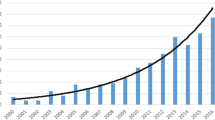Abstract
This article investigates the order problem in a two-stage supply chain consisting of retailers, primary suppliers and backup suppliers. From retailers’ perspectives, the optimal offering strategies in unidirectional transshipments are analyzed on the basis of disruption risks in supply chains. With a focus on retailers’ profits, it develops the decision model of retailers’ orders in the dual sourcing mode and in the mode of capacity options, to maximize the retailers’ expected profits. The simulation shows that retailers’ optimal order decisions are not correlated with the joint disruption probability in the two order modes without service constraints; retailers’ optimal decisions are influenced by the joint disruption probability in the two order modes with service constraints, and the impact of the joint disruption probability of the primary suppliers’ optimal order from retailers differs in the two modes. Retailers’ order decisions in respect of backup suppliers are more sensitive to the changing volumes of transshipments. The contribution of this article is the impact of main parameters on retailers’ decisions, providing some guidance for enterprises to make order decisions.
Similar content being viewed by others
References
Biais B, Hillion P, and Spatt C, An empirical analysis of the limit order book and the order flow in the Paris Bourse, Journal of Finance, 1995, 50(5): 1655–1689.
Tomlin B, On the value of mitigation and contingency strategies for managing supply chain disruption risks, Management Science, 2006, 52(5): 639–657.
Berger P D and Zeng A Z, Single versus multiple sourcing in the presence of risks, Journal of the Operational Research Society, 2006, 57(3): 250–261.
Chopra S, Reinhardt G, and Mohan U, The importance of decoupling recurrent and disruption risks in a supply chain, Naval Research Logistics, 2007, 57(5): 544–555.
Giri B C, Managementinventory with two suppliers under yield uncertainty and risk aversion, International Journal of Production Economics, 2010, 15(9): 214–219.
Chen J L, Zhao X B, and Zhou Y, A periodic-review inventory system with a capacitated backup supplier for mitigating supply disruptions, European Journal of Operational Research, 2012, 219(2): 312–323.
Schmitt A J and Snyder L V, Infinite-horizon models for inventory control under yield uncertainty and disruptions, Computers and Operations Research, 2012, 39(4): 850–852.
Xanthopoulos A, Vlachos D, and Iakovou E, Optimal newsvendor policies for dual-sourcing supply chains: A disruption risk management framework, Computers and Operations Research, 2012, 39(2): 350–357.
Zhu J J and Fu S C, Ordering policies for a dual sourcing supply chain with disruption risks, Journal of Industrial Engineering and Management, 2013, 6(1): 380–389.
Li S S, He Y, and Chen L J, Dynamic strategies for supply disruptions in production-inventory systems, International Journal of Production Economics, https://doi.org/10.1016/j.ijpe.2017.04.003.
Firouz M, Keskin B B, and Melouk S H, An integrated supplier selection and inventory problem with multi-sourcing and lateral transshipments, Omega, 2017, 70(6): 77–79.
Sophie P, Managing risks of supply-chain disruptions: Dual sourcing as a real option, Master’s degree thesis, Massachusetts Institute of Technology,Massachusetts, 2003.
He Y and Zhao X, Contracts and coordination: Supply chains with uncertain demand and supply, Naval Research Logistics, 2016, 63(4): 305–319.
Evers P, Hidden benefits of emergency transshipments, Journal of Business Logistics, 1997, 18(2): 55–76.
Herer Y and Michal T, The dynamic transshipment problem, Naval Research Logistics, 2001, 48(5): 386–408.
Evers P, Heuristics for assessing emergency transshipments, European Journal of Operational Research, 2001, 129(2): 311–316.
Minner S, Silver E A, and Robb D J, An improved heuristic for deciding on emergency transshipments, European Journal of Operational Research, 2003, 148(2): 384–400.
Cheung K L and Lee H L, The inventory benefit of shipment coordination and stock rebalancing in a supply chain, Management Science, 2002, 48(2): 300–306.
Wee K E and Dada M, Optimal policies for transshipping inventory in a retail network, Management Science, 2005, 51(10): 1519–1533.
Özdemir D, Yücesan E, and Herer Y T, Multi-location transshipment problem with capacitated production, European Journal of Operational Research, 2013, 226(3): 425–435.
Zou L, Dresner M, and Windle R, A two-location inventory model with transshipments in a competitive environment, International Journal of Production Economics, 2010, 125(2): 235–250.
Liao Y, Shen W J, Hu X X, et al., Optimal responses to stockouts: Lateral transshipment versus emergency order policies, Omega, 2014, 49(2): 79–92.
He Y, Zhang P, and Yao Y L, Unidirectional transshipment policies in a dual-channel supply chain, Economic Modelling, 2014, 40(6): 259–268.
Feng P P, Fung R Y K, and Wu F, Preventive transshipment decisions in a multi-location inventory system with dynamic approach, Computers and Industrial Engineering, 2017, 104(2): 1–8.
Amrani H and Khmelnitsky E, Optimal division of inventory between depot and bases, Naval Research Logistics, 2017, 64(3): 3–18.
Meena P L, Sarmah S P, and Sarkar A, Sourcing decisions under risks of catastrophic event disruptions, Transportation Research Part E: Logistics and Transportation Review, 2011, 47(6): 1058–1074.
Sting F J and Huchzermeier A, Ensuring responsive capacity: How to contract with backup suppliers, European Journal of Operational Research, 2010, 207(2): 725–735.
Author information
Authors and Affiliations
Corresponding author
Additional information
This research was supported by the National Natural Science Foundation of China under Grant Nos. 71771080, 71172194, 71521061, 71790593, 71642006, 71473155, 71390335, 71571065 and Hunan Provincial Innovation Foundation for Postgraduate under Grant No. CX2016B078.
This paper was recommended for publication by Editor YANG Xiaoguang.
Rights and permissions
About this article
Cite this article
Shu, T., Yang, X., Chen, S. et al. Retailers’ Order Strategies in Transshipments in Disruption Risks of Supply Chains. J Syst Sci Complex 31, 1273–1301 (2018). https://doi.org/10.1007/s11424-018-6217-x
Received:
Revised:
Published:
Issue Date:
DOI: https://doi.org/10.1007/s11424-018-6217-x




